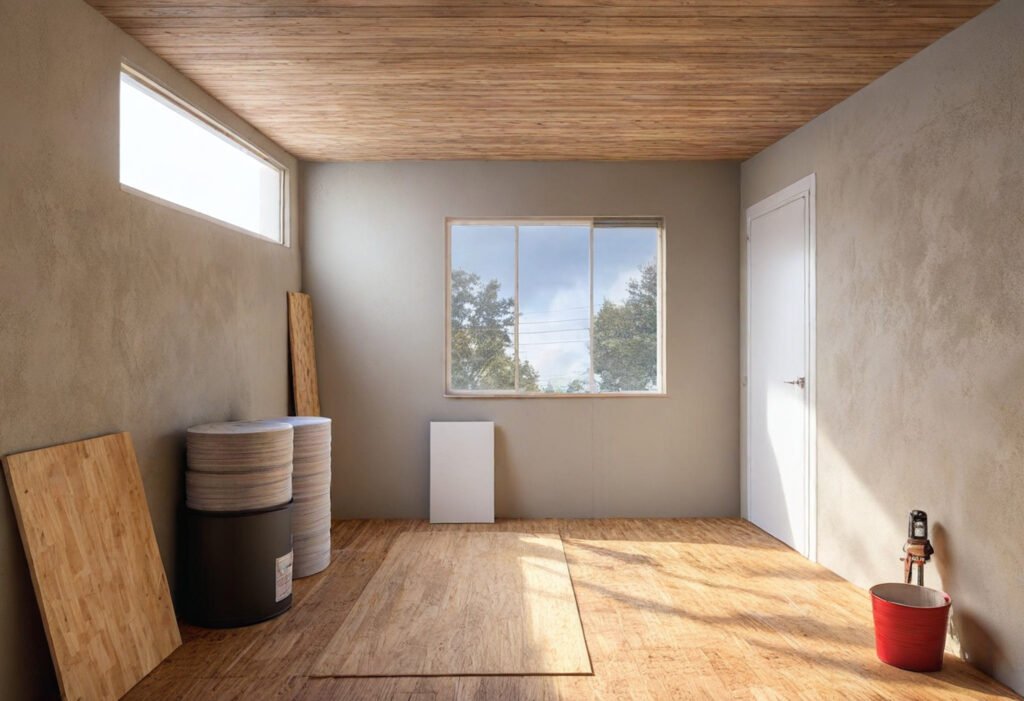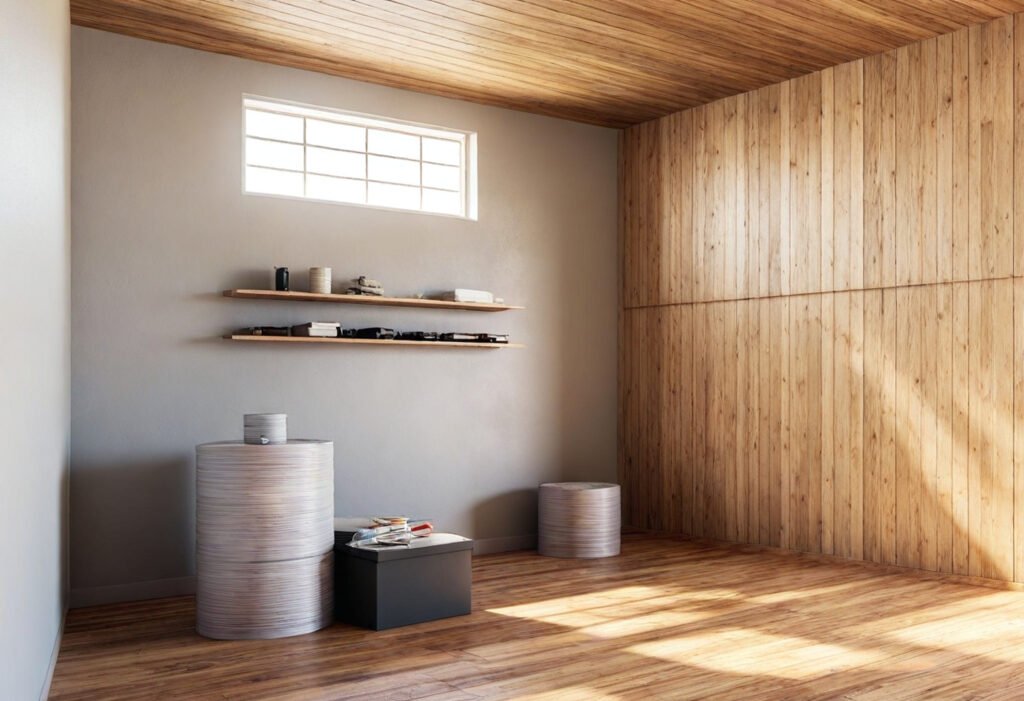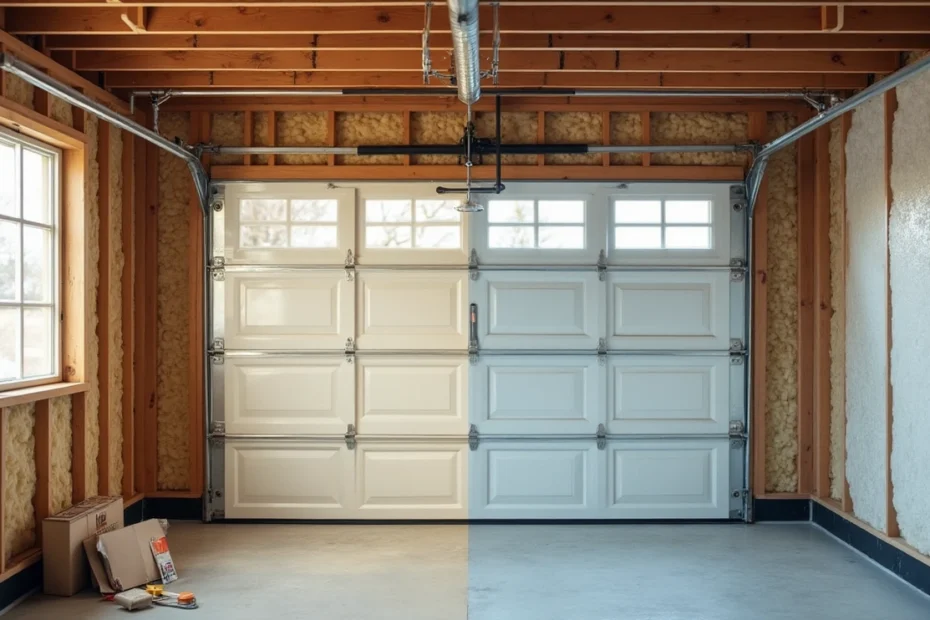Smart homeowners want to know the cheap way to insulate their garage. This home improvement project makes perfect sense. Your utility bills can drop by 20-30% while your garage stays about 12 degrees warmer during winter and 25 degrees cooler in summer months. The project stands out as one of the most affordable ways to boost energy efficiency as we approach 2025.
Your garage’s different areas need specific insulation approaches. Most people don’t know this crucial fact. Budget-friendly solutions exist for your garage ceiling and door that you can implement quickly before the weather changes. A typical DIY garage door insulation kit costs around $100 and includes all materials needed for a weekend project.
This piece explores five affordable insulation methods that deliver results. You’ll learn which approaches to avoid and when spending extra money makes sense, especially if your garage serves as a workshop or living space. The right insulation helps you save hundreds of dollars each year on energy costs. Even basic insulation methods prove to be a smart investment.
Why Cheap Garage Insulation Matters in 2025
Garage insulation has evolved beyond luxury to become a necessity for energy-conscious homeowners in 2025. Most U.S. homes lack proper insulation and have much air leakage. You can save money without breaking the bank by knowing where and how to insulate.
Energy loss through garage doors and ceilings
Your garage door represents your home’s largest opening and often causes major energy loss. Uninsulated garage walls can leak up to 35% of your home’s heat. The numbers get worse with ceilings and roofs, which account for 25-40% of heat loss. This waste impacts your entire home, especially when you have an attached garage that lets air flow into your living space.
The impact shows up quickly. Your HVAC system struggles harder, bills go up, and comfort levels drop. So, even simple insulation helps cut this waste and can save you 15% on heating and cooling costs.
How insulation affects your home’s thermal envelope
The thermal envelope acts as a barrier between your home’s conditioned and unconditioned spaces or outdoors. It needs two vital elements: insulation that slows heat transfer and air sealing that closes gaps. These elements protect you from temperature swings.
Your attached garage’s thermal boundary is vital. Without an effective thermal barrier, extreme temperatures from your garage can seep into your home. The EPA reports that better insulation and air sealing can reduce your heating and cooling expenses by about 15%.
When cheap insulation is enough
You might not need expensive insulation solutions. Simple insulation often works fine for detached garages used to store items or park cars. The same applies if your garage’s cinderblock walls have an R-value around 2 – just adding door insulation can boost structural strength and offer modest energy savings.
Budget-friendly options like weatherstripping and sealing leaks can make big improvements without costing much. Note that even lower R-values save energy compared to spaces without insulation. The trick lies in matching your insulation plan to what you need rather than overdoing it.
5 Cheap Ways to Insulate Your Garage That Work

Your garage is likely the biggest heat leak in your home. The good news is you can find affordable insulation options that work great without spending too much money.
1. Foam board panels for garage doors
Rigid foam boards are excellent insulators for garage doors. They provide R-values from R-3.8 to R-6.5 per inch. You can choose between expanded polystyrene (EPS) – an affordable option with good insulation properties – and extruded polystyrene (XPS), which resists water better. Many people cut these boards 1/8″ larger than needed so they stay firmly in place between door panels.
2. Fiberglass batts for garage ceilings and walls
Fiberglass batts are the top choice for walls and ceilings because they’re affordable and easy to find. These pre-cut rolls fit perfectly between wall studs and ceiling joists to provide decent insulation. You can install them by stapling the paper face to the stud’s side (not the front) and trimming the extra insulation with a utility knife. These batts cost $1.70 to $3.00 per square foot, making them a budget-friendly choice for most garages.
3. Reflective foil insulation for hot climates
Reflective insulation takes a different approach than standard options. It bounces radiant energy away from your garage instead of just slowing heat transfer. This material stops 96% of radiant heat, which makes it perfect for warmer areas. You’ll find it easy to install, and it looks clean without creating any mess. This option works best in garages that have doors facing south or west with lots of direct sun.
4. Garage door insulation kits under $100
Pre-packaged kits give you everything you need at prices below $70. Each kit comes with pre-cut panels sized for standard garage doors and all mounting hardware. A good example is the Cellofoam Garage Door Insulation Kit at $67.98, which covers a single-car garage door with eight panels. These kits are affordable and take less than an hour to install with basic tools.
5. Weatherstripping and air sealing as a quick fix
Simple solutions often work amazingly well. Weatherstripping comes in aluminum, vinyl, and rubber that fight mildew and wear while stopping drafts. This upgrade helps keep outside air out and inside air in. You can seal small gaps under ¼ inch with caulk and use foam for bigger gaps up to 3 inches to finish this quick improvement.
What to Avoid: Insulation Methods That Waste Money
Your money won’t stretch far with every garage insulation method out there. Smart choices about what to avoid can save you from making pricey mistakes as you look for economical ways to insulate your garage.
Spray foam for frequently used garages
Spray foam builds an excellent air barrier, but it’s overkill for most garage needs. You’ll need professionals to install it, and this makes your project costs shoot up. The foam hardens permanently, which makes any future wiring or plumbing changes really tough. Poor installation can lead to trapped moisture over time, and mold problems might follow.
Cellulose insulation in damp environments
Cellulose looks like a budget-friendly choice until you see its biggest drawbacks in garage settings. The material can absorb up to 130% water by weight, which creates perfect conditions where mold thrives. The problems don’t stop there – modern cellulose sinks by up to 20% as time passes, leaving gaps with no insulation. Wall installations face another issue – cellulose can “bridge” or split apart, letting unwanted air flow through.
Over-insulating without sealing air leaks
DIYers often skip air sealing before they add insulation. The EPA reports that homeowners can save up to 20% on heating and cooling costs with proper sealing and insulation. Insulation by itself won’t block air movement. Stuffing too much fiberglass squeezes the air pockets that give thermal resistance, and this makes it work less effectively.
When Cheap Isn’t Enough: Upgrades That Make Sense

Simple insulation might not meet your needs. Budget-friendly options seem appealing, but some situations require bigger investments.
Using your garage as a living or work space
Your garage’s conversion into a functional living or workspace needs strong insulation. The workspace where you’ll spend most time should achieve an R-value of at least R-13 for walls and R-30 for ceilings. These higher values help maintain comfortable temperatures year-round.
Power tools or electronic equipment need special consideration. Cheap insulation might not control temperature well enough. Multiple insulation types create better thermal barriers – maybe even combining rigid foam on walls with fiberglass in the ceiling.
Detached garages with heating or cooling
Climate control systems in detached garages make insulation crucial. Simple weatherstripping isn’t enough when you heat or cool the space actively. A complete approach with properly sized insulation works better in all areas.
Heating units specifically just need better insulation to save energy. HVAC installation in your detached garage requires higher R-value materials. This prevents your system from overworking and wasting energy.
Replacing old doors with insulated models
The most economical long-term solution often involves replacing outdated garage doors completely. Modern insulated doors work better than older models. Pre-insulated doors’ R-values range between R-6 and R-18, which far exceed simple doors with aftermarket insulation.
Higher upfront costs of insulated replacement doors pay off through energy savings, better durability, and increased home value. These doors also fix common problems like drafts and noise that DIY insulation doesn’t handle well.
Conclusion
Garage insulation stands out as one of the most practical and available home improvements you can tackle in 2025. Simple insulation steps can cut your utility bills by 20-30% and make your garage more comfortable all year.
You’ll find budget-friendly options for any garage setup. Foam board panels work great for doors, while fiberglass batts are perfect for walls and ceilings. Hot climates benefit from reflective foil, and insulation kits provide complete solutions at reasonable prices. A few strips of weatherstripping can make a surprising impact quickly.
Each insulation method brings different benefits. Spray foam costs too much for most garages, and cellulose doesn’t hold up well where moisture builds up. Your insulation won’t work properly without sealing air leaks first. These differences matter as you plan your project.
Your garage’s specific requirements should shape your strategy. Standard storage spaces do fine with simple insulation, but workshops and living areas just need stronger solutions. Sometimes, buying a quality insulated door makes more sense than upgrading an old one.
Here’s the best part – improving your garage doesn’t require deep pockets. Many garage insulation projects cost less than $100 and take just a weekend to finish. These small investments pay off fast through lower energy bills and create a better garage space. The key to cheap garage insulation isn’t finding the lowest price – it’s striking the right balance between cost and performance for your garage’s needs.
